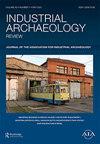克罗地亚里耶卡原工业和早期工业时代的结构
IF 0.1
4区 历史学
0 ARCHAEOLOGY
引用次数: 1
摘要
1719年里耶卡被宣布为自由港,1725年圣查尔斯博罗梅奥的海军检疫站(lazaretto)的建立,开启了里耶卡的经济和城市发展,使里耶卡从一个沿海小镇发展成为一个重要的制造业和工业中心。随着检疫站和最大的工厂——1750年建成的糖厂——的建成,这个城市的第一个制造业区形成了。在第二个区域,沿着rje本文章由计算机程序翻译,如有差异,请以英文原文为准。
Structures of the Proto-industrial and Early Industrial Age in Rijeka, Croatia
ABSTRACT The proclamation of Rijeka as a free port in 1719, and the construction of the lazaretto (naval quarantine station) of St Charles Borromeo in 1725, initiated the economic and urban development of Rijeka, which grew from a small coastal town into a significant centre of manufacturing and industry. With the lazaretto and the largest factory, a sugar refinery built in 1750, the city’s first manufacturing zone was formed. In the second zone, along the Rječina River, in 1821 a paper mill was built, which in 1833 received the first steam engine, with which the industrialisation of the city began. This article describes the materials and structures of the industrial buildings that characterise this period. In proto-industrial and early industrial times, construction consisted mainly of massive stone and brick walls or masonry-vaulted structures. In the 19th century, buildings begin to adapt to the production processes, which influenced the development of a new architectural typology. The internal structures were made of wood, a readily available and inexpensive material, with which the builders already had extensive experience.
求助全文
通过发布文献求助,成功后即可免费获取论文全文。
去求助
来源期刊

Industrial Archaeology Review
Multiple-
CiteScore
0.40
自引率
66.70%
发文量
26
期刊介绍:
Industrial Archaeology Review aims to publish research in industrial archaeology, which is defined as a period study embracing the tangible evidence of social, economic and technological development in the period since industrialisation, generally from the early-18th century onwards. It is a peer-reviewed academic journal, with scholarly standards of presentation, yet seeks to encourage submissions from both amateurs and professionals which will inform all those working in the field of current developments. Industrial Archaeology Review is the journal of the Association for Industrial Archaeology. Published twice a year, the focal point and common theme of its contents is the surviving evidence of industrial activity.
 求助内容:
求助内容: 应助结果提醒方式:
应助结果提醒方式:


